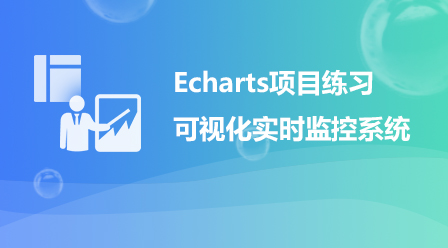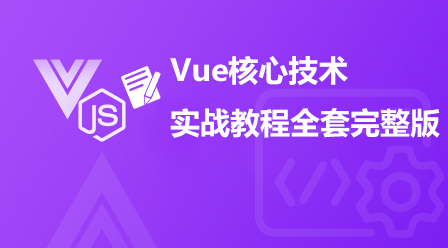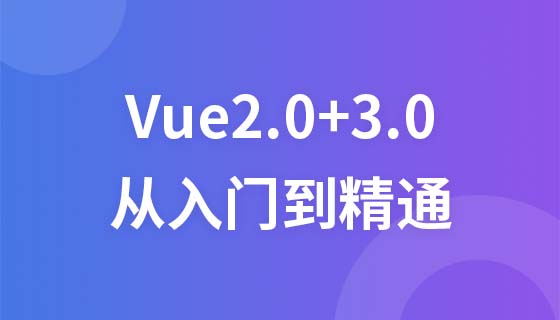Vue中怎麼使用語法糖?以下這篇文章帶大家了解一下語法糖,並介紹一下Vue3.2語法糖的使用方法,希望對大家有幫助!

在Vue2時期,元件裡定義的各類別變數、方法、計算屬性等是分別存放到data、methods、computed等選項裡,這樣編寫的程式碼不便於後期的查閱,查找一個業務邏輯需要在各個選項來回切換。 vue3.0組合式APIsetup函數的推出就是為了解決這個問題,它讓我們的邏輯關注點更加集中,語法也更加精簡,但是當我們在使用vue3.0的語法就建構元件的時候,總是需要把外面定義的方法變數必須要return出去才能在<template>,比較麻煩一些. vue3. 2語法糖的出現以及一些新增的API,讓我們的程式碼進一步簡化。 【學習影片分享:vue影片教學、web前端影片】
語法糖(英文:Syntactic sugar)是由英國電腦科學家彼得·蘭丁發明的術語,指電腦語言中加入的某種語法,這種語法對語言的功能沒有影響,但是更方便程式設計師使用。語法糖讓程式更加簡潔,有更高的可讀性。
Vue3.2語法糖#請看下vue3.0與vue3.2的單一檔案元件(SFC,即.vue 檔案)的結構比較
#vue3.0元件<template>
<div>
</div>
</template>
<script>
export default {
components: {
},
props: {
},
setup () {
return {}
}
}
</script>
<style scoped>
</style>vue3.2元件<template>
<MyTestVue :title="title" @click="changeTitle" />
</template>
<script setup>
import MyTestVue from './MyTest.vue';
import { ref } from 'vue';
const title = ref('测试一下')
const changeTitle = () => {
title.value = 'Hello,World'
}
</script>
<style scoped>
</style>#對比vue3.0 與vue3.2版本的元件模板,最主要的變化是3.2中沒有了setup函數,而是把它放在了script標籤中。
我們定義的屬性和方法也不用在return中返回,直接就可以用在模板語法中 ...
這些是直覺的變化,接下來我們學習具體的用法。
vue3.0中使用元件,需要使用components 選項來明確註冊:
<script>
import ComponentA from './ComponentA.js'
export default {
components: {
ComponentA
},
setup() {
// ...
}
}
</script>vue3.2 <script setup> 的在單一檔案元件中,匯入的元件可以直接在範本中使用,元件會自動註冊,且無需指定目前元件的名字,它會自動以檔案名稱為主,也就是不用再寫name屬性了。
<script setup> import ComponentA from './ComponentA.vue' </script> <template> <ComponentA /> </template>
#在vue3.0中,prop可以使用props選項來宣告
<script>
export default {
props: ['foo'],
// 或者用这种方式指类型与默认值
// props: {
// foo:{
// type: String,
// default: ''
// },
// },
setup(props) {
// setup() 接收 props 作为第一个参数
console.log(props.foo)
}
}
</script>vue3.2元件中,props可以使用defineProps()巨集來聲明
<script setup>
const props = defineProps(['foo'])
// 或者
const propsOther = defineProps({
title: String,
likes: Number
})
console.log(props.foo)
</script>注意事項:所有的props 都遵循著單向綁定原則,props 因父元件的更新而變化,自然地將新的狀態向下流往子元件,而不會逆向傳遞,這意味著你不應該在子元件中去更改一個prop。
我們一般使用計算屬性來描述依賴響應式狀態的複雜邏輯。說白了就是這個計算屬性的值依賴其他響應式屬性的值,依賴的屬性會發生變化,那麼這個計算屬性的值就會重新計算。
<script setup>
import { ref, computed } from 'vue'
const firstName = ref('John')
const lastName = ref('Doe')
const fullName = computed({
// getter
get() {
return firstName.value + ' ' + lastName.value
},
// setter
set(newValue) {
// 注意:我们这里使用的是解构赋值语法
[firstName.value, lastName.value] = newValue.split(' ')
}
})
</script>當呼叫fullName.value = 'John Doe'時,setter會被調用,而firstName 和lastName會被更新,在vue3.2中我們可以直接在<template>標籤中使用它,而沒有在需要return回傳。
- 不要在计算函数中做异步请求或者更改 DOM!
- 一个计算属性仅会在其响应式依赖更新时才重新计算,如果他依赖的是个非响应式的依赖,及时其值发生变化,计算属性也不会更新。
- 相比于方法而言,计算属性值会基于其响应式依赖被缓存,一个计算属性仅会在其响应式依赖更新时才重新计算
在组合式API中,我们可以使用watch函数在每次响应式状态发生变化时触发回调函数,watch的第一个参数可以是不同形式的“数据源”:它可以是一个 ref(包括计算属性)、一个响应式对象、一个 getter 函数、或多个数据源组成的数组:watch()是懒执行的:仅当数据源变化时,才会执行回调,例如:
<script setup>
import { ref,watch } from 'vue';
const props = defineProps({
title: String,
itemList: {
type: Array,
default: () => [{
text: 'title',
value: 0
}]
}
})
watch(() => props.itemList.length,(newValue,oldValue) => {
console.log('newValue===',newValue);
console.log('oldValue===',oldValue);
})
</script>这里监听
props.itemList.length,当传入的itemList数量发生变化时,后面的回调方法会被调用。当然wacth()还有第三个可选参数:否开启深监听(deep), 如果这里这样写:<script setup> import { ref,watch } from 'vue'; ... watch(() => props.itemList,(newValue,oldValue) => { console.log('newValue===',newValue); console.log('oldValue===',oldValue); }) </script>登入後複製当传入的
itemList数量发生改变时,回调函数不会触发,正确的写法是加上其第三个参数deep:true
<script setup>
import { ref,watch } from 'vue';
...
watch(() => props.itemList,(newValue,oldValue) => {
console.log('newValue===',newValue);
console.log('oldValue===',oldValue);
},{deep:true})
</script>watch也可以同时监听多个属性:
<script setup>
import { ref,watch } from 'vue';
const props = defineProps({
title: String,
itemList: {
type: Array,
default: () => [{
text: 'title',
value: 0
}]
}
})
// 同时监听多个属性
watch(() => [props.itemList,props.title],(newValue,oldValue) => {
console.log('newValue===',newValue);
console.log('oldValue===',oldValue);
},{deep:true})
</script>watchEffect()与watch()的懒执行不同的是,watchEffect()会立即执行一遍回调函数,如果这时函数产生了副作用,Vue会自动追踪副作用的依赖关系,自动分析出响应源。上面的例子可以重写为:
<script setup>
...
watchEffect(() => {
console.log('itemList===',props.itemList.length);
console.log('title===',props.title);
})
</script>这个例子中,回调会立即执行。在执行期间,它会自动追踪props.itemList.length作为依赖(和计算属性的行为类似)。每当传入的itemList.length变化时,回调会再次执行。
如果要清除watchEffect()的的监听,只需要显示的调用watchEffect()的返回函数就可以了,例如:
<script setup>
...
const stopEffect = watchEffect(() => {
console.log('itemList===',props.itemList.length);
console.log('title===',props.title);
})
stopEffect()
</script>watch 只追踪明确侦听的数据源。它不会追踪任何在回调中访问到的东西。另外,仅在数据源确实改变时才会触发回调。我们能更加精确地控制回调函数的触发时机。 watchEffect,则会在副作用发生期间追踪依赖。它会在同步执行过程中,自动追踪所有能访问到的响应式属性。
vue3.0中如果我们的子组件触发父组件的方法,我们的做法:
子组件
<script>
export default {
emits: ['inFocus', 'submit'],
setup(props, ctx) {
ctx.emit('submit',params)
}
}
// 或者将可以将emit解构使用
export default {
setup(props,{emit}) {
emit('submit',params)
}
}
</script>
父组件
<template>
<Children @submit="submitHandel"/>
</div>
</template>
<script>
export default {
name: 'TodoItem',
setup(props, { emit }) {
const submitHandel = () => {
console.log('子组件调用了父组件的submitHandel方法');
}
return {
submitHandel,
}
}
};
</script>vue3.2语法糖中,子组件要触发的事件需要显式地通过 defineEmits() 宏来声明
子组件
<script setup>
const emit = defineEmits(['inFocus', 'submit'])
function buttonClick(parmas) {
emit('submit', parmas)
}
</script>
父组件
<template>
<Children @submit="submitHandel"/>
</div>
</template>
<script setup>
const submitHandel = () => {
console.log('子组件调用了父组件的submitHandel方法');
}
};
</script>vue3.0中如果父组件触发子组件的方法或是属性,直接在return函数中返回就可以,数据都是默认隐式暴露给父组件的。
<script>
// 子组件
setup(props, { emit }) {
const isShow = ref(false)
// 父组件调用这个方法
const showSubComponent = () => {
isShow.value = !isShow.value
}
return {
// return 返回
showSubComponent,
}
}
</script>父组件中通过ref获取到子组件,并对子组件暴露的方法进行访问
父组件
<template>
<div class="todo-list">
<TodoItemVue :itemList="itemList" @clickItemHandel="clickItemHandel" ref="todoItemVueRef" />
</div>
</template>
<script>
import { ref } from 'vue';
export default {
setup(props, { emit }) {
//获取子组件ref
const todoItemVueRef = ref(null)
// 调用子组件的方法
const callItemFuncHandel = () => {
todoItemVueRef.value.showSubComponent()
}
return {
todoItemVueRef
}
}
};
</script>vue3.2语法中,父组件的调用方式相同,子组件通过defineExpose()将方法或是属性暴露出去
子组件
<script setup>
const isShow = ref(false)
// 父组件调用这个方法
const showSubComponent = () => {
isShow.value = !isShow.value
}
// 通过defineExpose将方法暴露出去
defineExpose({
showSubComponent
})
</script>
父组件
<template>
<div class="todo-list">
<TodoItemVue :itemList="itemList" @clickItemHandel="clickItemHandel" ref="todoItemVueRef" />
</div>
</template>
<script setup>
import { ref } from 'vue';
//获取子组件ref
const todoItemVueRef = ref(null)
// 调用子组件的方法
const callItemFuncHandel = () => {
todoItemVueRef.value.showSubComponent()
}
</script>在vue3.0与vue3.2中创建Vuex没有区别,只不过在<template>模板中使用Vuex的store有细微差别。
import { createStore } from 'vuex';
import { ADD_ITEM_LIST, REDUCE_ITEM_LIST, CHANGE_ITEM_LIST_ASYNC } from './constants';
export default createStore({
state: {
itemList: [
{ text: 'Learn JavaScript', done: true },
{ text: 'Learn Vue', done: false },
{ text: 'Build something awesome', done: false },
],
},
getters: {
doneItemList: (state) => state.itemList.filter((todo) => todo.done),
},
mutations: {
// 使用ES2015风格的计算属性命名功能 来使用一个常量作为函数名
[ADD_ITEM_LIST](state, item) {
console.log('增加数据', item);
state.itemList.push(item);
},
[REDUCE_ITEM_LIST](state) {
console.log('减少数据');
state.itemList.pop();
},
},
actions: {
[CHANGE_ITEM_LIST_ASYNC]({ commit, state }, todoItem) {
/// 模拟网络请求
setTimeout(() => {
commit(ADD_ITEM_LIST, todoItem);
console.log('state===', state);
}, 1000);
},
},
modules: {
},
});在vue3.0中我们一般在return中对store.state进行解构,然后可以直接在<template>中使用state中的值
<template>
<div class="todo-item">
<ol>
<li v-for="(item,index) in itemList" :key="index" class="todos" @click="clickItem(index)">
{{ item.text }}
</li>
</ol>
</div>
</template>
<script>
export default {
name: 'TodoItem',
setup(props, { emit }) {
return {
// 对store.state进行解构
...store.state,
clickItem,
count,
isShow,
showSubComponent,
}
}
};
</script>vue3.2中没有了return,需要我们显示的获取要使用的stare的值
<template>
<div class="todo-item">
<ol>
<li v-for="(item,index) in itemList" :key="index" class="todos" @click="clickItem(index)">
{{ item.text }}
</li>
</ol>
</div>
</template>
<script setup>
import { useStore } from 'vuex';
const store = useStore()
// 获取后在<template>中使用
const itemList = store.state.itemList
</script><span style="font-size: 18px;"><style></span>中的 v-bind<style>中的 v-bind: 用于在 SFC <style> 标签中启用组件状态驱动的动态 CSS 值
<script setup>
import { ref, watchEffect } from 'vue';
const color = ref('black')
const callChangeColorHandel = () => {
if(color.value === 'black') {
color.value = 'red'
}else {
color.value = 'black'
}
}
</script>
<style lang="scss" scoped>
.todo-list {
color: v-bind(color);
}
</style>触发callChangeColorHandel 函数,在<style>中的v-bind指令可以动态绑定的响应式状态。
整體來說,setup語法糖的引入簡化了使用Composition API時冗長的模板程式碼,也就是讓程式碼更加簡潔,可讀性也更高。並且官方介紹vue3.2在介面渲染的速度以及記憶體的使用量上都進行了優化,本文只是對setup語法糖的常用方式進行了總結,更多vue3.2新功能可以去官方文件查看。
以上是什麼是語法糖? Vue3.2中怎麼使用語法糖?的詳細內容。更多資訊請關注PHP中文網其他相關文章!




